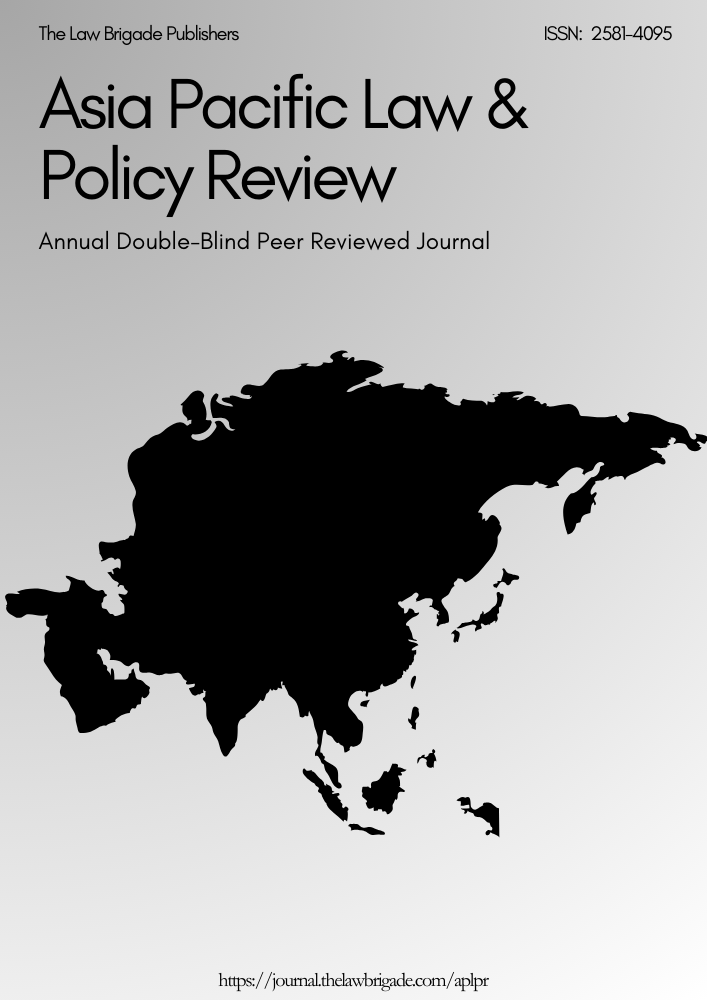ARBITRATOR’S FEES: INCONSISTENCIES IMPINGING ON REMEDIES
Keywords:
ARBITRATOR’S FEES, REMEDIES, INCONSISTENCYAbstract
Arbitration is the alternative panacea of long-standing litigations. The defining traits and particularities of arbitration include a combination of procedural and substantive laws, with party autonomy forming the basis of such laws and a preferable choice among parties to resolve their dispute amicably. Even as the market of arbitration continues to flourish, the dispute resolution mechanism has a long way to go, owing to the complexities in its present-day implementation, such as the challenges faced in the exorbitant fees of the arbitrators, enforcement of awards, et al. Repeated efforts have been made by various amendments in the law to make the mechanism more efficient, but lexical inconsistencies have created larger complexities. One such contentious loophole in the present regime is the diverse inferences drawn by arbitral tribunals and courts, which is the detrimental conclusion of fixing the ‘Arbitrator’s fee’, where the fee is not pre-determined in the arbitration agreement. The 1996 Act hardly provides any concrete guidance as to how the arbitral tribunal should determine its fee. The exorbitant fee charged by the arbitrator(s) on a per-sitting basis without much clarity, has been a major reason for litigants to disregard this mechanism. However, this long drawn debate has been relieved to some extent by the 2015 Amendment with the introduction of the Fourth Schedule. This Schedule lays down a model fee structure for deciding the arbitrator’s fee, based on the ‘sum in dispute’. Further amendments concerning the arbitrator’s fee were made by the 2019 Amendment but the tangible benefits of the amendments are still questionable.
Downloads
Downloads
Published
Issue
Section
License

This work is licensed under a Creative Commons Attribution-NonCommercial-ShareAlike 4.0 International License.
License Terms
Ownership and Licensing:
Authors of research papers submitted to any journal published by The Law Brigade Publishers retain the copyright of their work while granting the journal specific rights. Authors maintain ownership of the copyright and grant the journal the right of first publication. Simultaneously, authors agree to license their research papers under the Creative Commons Attribution-ShareAlike 4.0 International (CC BY-SA 4.0) License.
License Permissions:
Under the CC BY-SA 4.0 License, others are permitted to share and adapt the work, even for commercial purposes, provided that appropriate attribution is given to the authors, and acknowledgment is made of the initial publication by The Law Brigade Publishers. This license encourages the broad dissemination and reuse of research papers while ensuring that the original work is properly credited.
Additional Distribution Arrangements:
Authors are free to enter into separate, non-exclusive contractual arrangements for distributing the published version of the work (e.g., posting it to institutional repositories or publishing it in books), provided that the original publication by The Law Brigade Publishers is acknowledged.
Online Posting:
Authors are encouraged to share their work online (e.g., in institutional repositories or on personal websites) both prior to submission and after publication. This practice can facilitate productive exchanges and increase the visibility and citation of the work.
Responsibility and Liability:
Authors are responsible for ensuring that their submitted research papers do not infringe on the copyright, privacy, or other rights of third parties. The Law Brigade Publishers disclaims any liability for any copyright infringement or violation of third-party rights within the submitted research papers.


